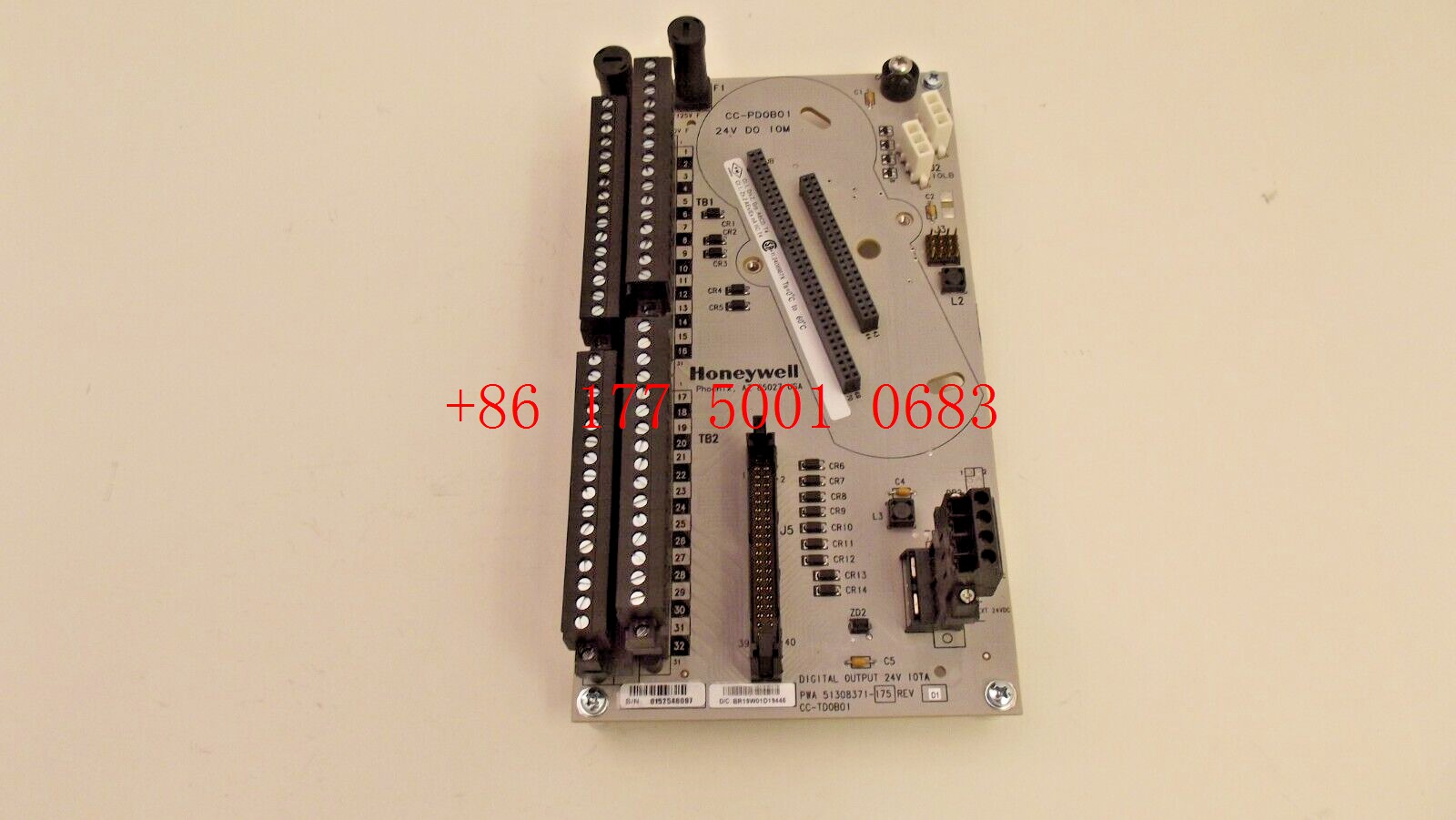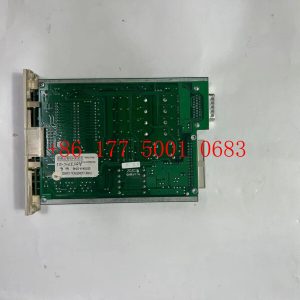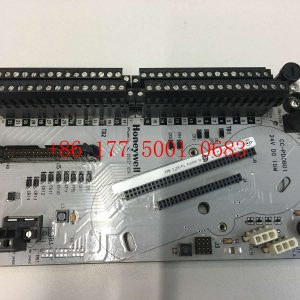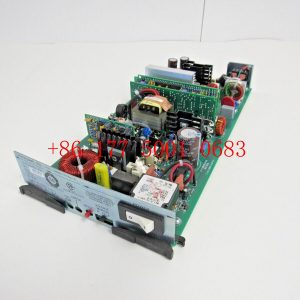Description
hardware flow control. It is an ideal choice in the field of industrial automation.
Why is the industrial Internet inseparable from industrial control?
ABB Global CEO Ulrich Spiesshofer recently accepted an exclusive interview with a reporter from Caijing in New York. He believes that the global manufacturing industry is
undergoing drastic changes. The era of labor arbitrage is over. Labor costs are no longer the focus of competition. The future of manufacturing lies in In factories that are smaller,
closer to consumers, and more agile. Artificial intelligence ( AI ) is the most important technology shaping the future of manufacturing. Currently, AI technology is mainly used in the
consumer field, but its large-scale application in the industrial field and among enterprises is more critical.
Digital transformation has been a keyword for global manufacturing giants in the past two years, and the industrial Internet is the implementation form of digital transformation.
General Electric (GE), Siemens and ABB are all leaders in this regard . Spiesshofer believes that GE”s industrial Internet only collects data and analyzes but cannot control it.
As the world”s two largest industrial automation suppliers, ABB and Siemens have the ability to control equipment, which is a significant difference from GE.
ABB is headquartered in Zurich, Switzerland. Its history can be traced back to the 1880s. It started from the original electrical manufacturing business and has developed into an international manufacturing
giant including electrical products, robotics and motion control, industrial automation and power grid. In 2017, ABB”s revenue was US$34.3 billion, ranking 341st among the
Fortune 500 companies. Spiesshofer has served as CEO for nearly five years since taking office in September 2013.
Below are the details of the interview.
The era of labor arbitrage is over
Caijing: Is 2018 a good year for the manufacturing industry?
Spiesshofer: From a global perspective, GDP is growing and consumption is also growing. Overall positive.
Caijing: What crucial changes are taking place in the manufacturing industry?
Spiesshofer: The jobs of the future will be different from the jobs of the past. In the Middle Ages, craftsmen moved between villages, taking their tools with them to work where
there was demand; later we invented factories, integrated supply and demand, and invented logistics; later people realized that there was labor arbitrage (Labor Arbitrage, Refers to
the existence of moving industries that have lost technological advantages and technical barriers to areas with low labor prices to increase profits by reducing labor costs), so we place
factories in emerging countries to benefit from labor arbitrage.
Now, with the development of modern automation and robotics, we can break this picture and bring value addition closer to demand. I think the future of manufacturing is
in factories that are smaller, closer to consumers, and more agile. I believe that the global logistics chain will also be reduced in the future because we will produce products closer to consumers.
The era of labor arbitrage shaping the global manufacturing landscape will be over because we can offset this arbitrage.
Recently we opened a new factory in Germany. Due to the adoption of intelligent automation technology, its unit cost is exactly the same as that of the best factories in
China. So I think the local market will be repositioned in the future, and the positioning of competitiveness will also change from just considering costs to focusing more on technology and value.
Caijing: Many people are complaining that automation has caused people to lose their jobs, and artificial intelligence technology has made the complaints louder
. But these new technologies are also creating new jobs. How do you see the relationship between the two?
Spiesshofer: In 1990, one-third of the world”s population lived below the extreme poverty line. Today, only 8% rely on technology. In fact, countries with the
highest robot densities, such as Germany, South Korea, Singapore, and Japan, also have the lowest unemployment rates. Robots combined with educated people can create prosperity, produce more
affordable goods, and lead to economic growth. Government, education and business need to work together to keep up with the changing world.
Clearly, millions of jobs are disappearing, but millions of new ones are being created. Taking our own business as an example, we used to have many
employees doing metal casting and forging work, but now these tasks are automated. But now we have more employees working in the service industry, developing apps, and working with customers.
So I think we should not be afraid of change, but should lead our employees to manage change and promote change. If we succeed, global employment will eventually grow.
https://www.xmamazon.com
https://www.xmamazon.com
https://www.plcdcs.com/
www.module-plc.com/
https://www.ymgk.com
3500/22M 288055-01 BENTLY New transient data interface module
BENTLY 3500/22M 138607-01 Transient Data Interface Module
BENTLY 2300/25-00 2300/20 Vibration Monitors
BENTLY NEVADA 60M100-00 Bentley detector module
BENTLY 60M100-00 Detector module
60M100-00 BENTLY Detector module
125680-01 BENTLY Communication card piece
125720-01 BENTLY System module
125800-01 BENTLY Medium voltage circuit board
133300-01 BENTLY Analog output module
136188-01 BENTLY I/O Module
146031-01 BENTLY Mainboard of the I/O module
3500/05-01-03-00-00-00 BENTLY rack
3500/15 133292-01 BENTLY Power module
3500/25 184684-01 BENTLY Key phase module
3500/40M 176449-01 BENTLY Displacement monitor
3500/42M 176449-02 BENTLY Shaft vibration module
3500/44M 176449-03 BENTLY System I/O module
3500/92 136180-01 BENTLY Communication gateway module
3500-05-01-02-00-00-01 BENTLY 3500 rack
136719-01 BENTLY I/O module
125768-01 BENTLY RIM I/O module
125760-01 BENTLY Data Manager I/O Module
3500/32 125712-01 BENTLY 4 channel relay module
3500/20 125744-02 BENTLY Rack interface module
3500/33 BENTLY Relay 16 channel module
3500/50 BENTLY Rotating speed module
3500/25 149369-01 BENTLY
60M100-00 BENTLY Main control panel
60M100-00 BENTLY Servo drive driver
106M1081-01 BENTLY 3500/15 fittings
106M1081-01 BENTLY Controller module
330180-50-00 Bently Nevada 3300 XL Proximitor Sensor
230025-00 Bently Nevada Series Vibration Monitor
330130-075-00-CN Bently Nevada Extension Cable
330106-05-30-15-02-CN Bently Nevada 3300 XL 8 mm Proximity Probes
330103-00-06-10-02-05CN Bently Nevada 3300 XL 8 mm Proximity Probes
3500/40M 140734-01 Bently Nevada Proximitor Monitor I/O Module
60M100-00 | Bently Nevada | Programmable logic controller processor
3500/22M 138607-01 | Bently Nevada | Standard Transient Data Interface Module
3500/61 | Bently Nevada | Temperature Monitors
330101-00-08-20-12-05 | Bently Nevada | 3300 XL 8mm Proximity Transducer Probe
146031-01 | Bently Nevada | Transient Data Interface I/O Module
350005-02-04-00-00-00 | Bently Nevada | DC IN Card Input Module
330930-065-01-05 | Bently Nevada | NSv Extension Cable
330180-51-00 | Bently Nevada | 3300XL Proximitor Sensor
330130-040-00-00 | Bently Nevada | 3300 XL Standard Extension Cable
149992-01 | Bently Nevada | 16 Channel Relay Output Module
126615-01 | Bently Nevada | Proximitor I/O Module
330105-02-12-05-02-00 | Bently Nevada | Reverse Mount Probes
330930-065-01-05 | Bently Nevada | NSv Extension Cable
16710-30 | Bently Nevada | 16710 Interconnect Cables
330180-51-05 | Bently Nevada | 3300 XL Proximitor® Sensor
330709-000-050-10-02-00 Bently Nevada 3300 XL 11 mm Proximity Probes
330106-05-30-05-02-00 Bently Nevada 3300 XL 8 mm Reverse Mount Probes
330130-040-00-00 Bently Nevada 3300 XL Standard Extension Cable
330106-05-30-05-02-05 Bently Nevada 3300 XL 8 mm Reverse Mount Probes
330103-00-06-10-02-00 Bently Nevada 3300 XL 8 mm Proximity Probes
330103-00-04-10-02-00 Bently Nevada 3300 XL 8 mm Proximity Probes
135462-01 Bently Nevada PLC module
132419-01 Bently Nevada PLC module
132417-01 Bently Nevada PLC module









Reviews
There are no reviews yet.